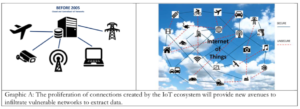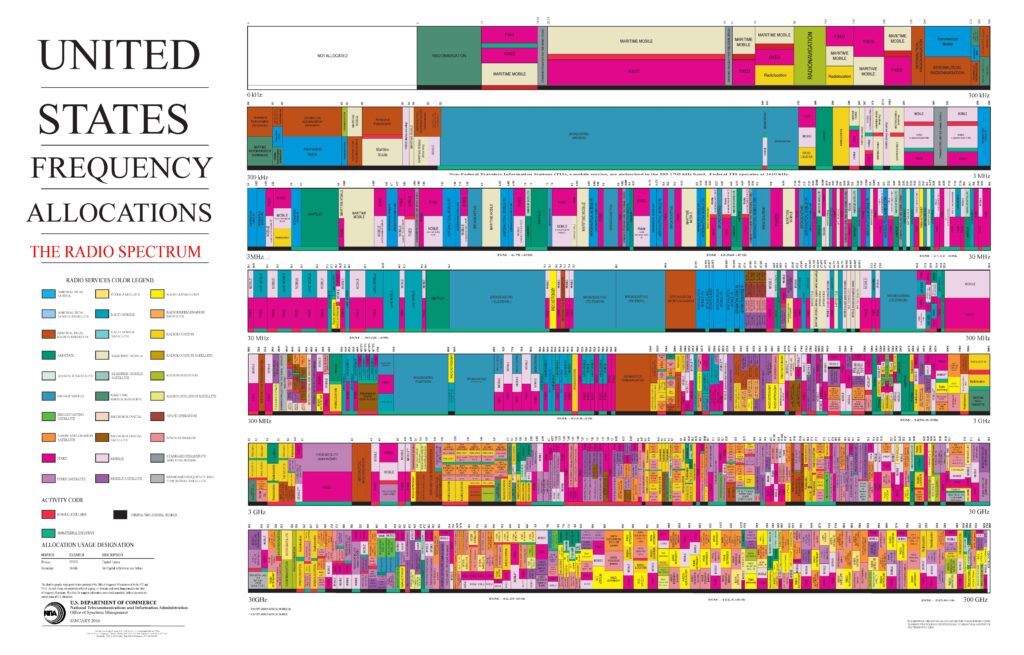5G: Speed Isn’t Everything; DoD, FCC Need To Work On Spectrum
Posted on

The blazing download rates of 20 gigabits per second promised by 5G advocates will be the exception, rather than the rule. The real benefit of emerging 5G architectures is how they could improve coverage, latency, and speed to mobile users from a teen streaming HD video in a downtown Minneapolis coffee shop to a Marine platoon at an advance base in the Philippines. Realizing these benefits, however, will require the U.S. government to focus on its broader goals for 5G and to rethink how it secures sensitive communications.
Even if it isn’t at broadband speeds everywhere, 5G will enable the Internet of Things and accelerate the decoupling of content from infrastructure as “cord-cutting” internet users move entirely to mobile networks instead of relying on Internet delivered by cable. Military communications could also increasingly ride on 5G wireless signals, connecting deployed troops and obviating the need for new wired infrastructure to support forces in garrison or base.

Bryan Clark
Supporting the jump to 5G, however, is a major enterprise. The shift from 3G to 4G mobile phones exploited new waveforms but leveraged mostly existing spectrum allocations and infrastructure. 5G will be different. Achieving the massive gain in bandwidth and shorter delay times, or latency, it promises will require new infrastructure and new ways to allocate spectrum. These investments, however, could also improve the connectivity of all users – provided the government sets the right policies and incentives.
Physics Matters
The amount of information a radiofrequency signal can carry is proportional to the frequency and the span of frequencies it covers. High frequency signals and wider bandwidths enable faster data rates. But, due to attenuation (diminution of the signal strength), high frequency signals don’t travel as far in air and cannot pass through buildings like lower frequency television or cell phone signals do today.
Telecommunication companies plan to get around the limitations of high frequency transmissions by using a combination of high, mid, and low-band signals. High-band 5G at 28-47 Ghz or higher will provide near-broadband speeds of up to 20 Gbps, but will require many more transmitters to overcome the range constraints of high frequencies. In urban areas, the density of transmitters must be even higher because the signals can’t pass deep into buildings. As a result, high-band 5G cells will behave like a super WiFi system, providing broadband speeds over several city blocks or a portion of a military base.
To connect high-band cells and provide coverage between them, mobile telecommunication providers will likely use mid-band signals from 2.5 to 6 Ghz. These signals can travel farther than high-band transmissions and pass through buildings. Although their speed will be less than broadband, mid-band transmissions can transmit more data than today’s 4GLTE mobile phones at about 700-1900 Mhz. To make up for the lower carrying capacity relative to high-band, providers are pursuing ways to increase the efficiency of their signals, such as transmitting over a wider span of frequencies or using multiple paths to allow one antenna to transmit more information to many receivers.
The most important frequency range in future 5G networks will be the low-band between 600 and 900 Mhz. This band has been used for 3G and 4G mobile phones for more than a decade, but 5G providers could increase its speed and lower its latency by improving efficiency using new waveforms, wider spans of frequency, and multipath transmission. The long range and penetration of low-band signals enables wide coverage areas unimpeded by buildings and some terrain. Low-band 5G could connect users in areas without wired broadband service at speeds up to 50 Mbps; far higher than possible with the 3G and 4G coverage they have today.
Giving 5G Room To Grow
The FCC’s 5G FAST Plan prioritizes allocation of spectrum to 5G high-band providers, and some tests are underway that confirm its expected combination of high speed and short range. High-band 5G will be a boon to users in areas where a large number of devices need broadband network access, but either need to be mobile or lack existing wired networks. Likely early applications could be dense urban areas, factories, warehouse complexes, research parks and military installations.
Recognizing the limitations of high-band 5G, some providers are moving out on low-band 5G first, using their extensive legacy frequency holdings and hoping to expand coverage and lower the latency of transmissions for rural and suburban users. Lower latency is especially important for applications like remote surgery, autonomous cars, and virtual or augmented reality.
Most problematic will be mid-band 5G, which operates in the frequencies where many military and air traffic control radars also live. The FCC has devised a spectrum sharing mechanism to make providers shift or turn off their mid-band transmissions in affected frequencies when one of these radars turns on nearby. This, however, will impact the span of contiguous frequencies mobile providers can use, degrading speed and latency. Wireless providers believe achieving their best speed and latency requires about 1 Ghz-wide transmissions for high-band 5G and about 100 Mhz-wide signals for mid-band 5G.
Mid-band 5G will be essential, however, to knit together small high-band cells and provide near-broadband mobile speeds to cities, suburbs, and large military installations such as training ranges. To free up wider swaths of frequencies, the FCC should accelerate their effort to re-allocate to 5G providers mid-band spectrum that is currently unlicensed or underutilized.

2016 frequency chart
The FCC and DoD also should refine their spectrum sharing arrangements. For operational security purposes, DoD should be limiting its radar and jamming emissions in CONUS; it should therefore establish formal constraints on emissions in CONUS that would make more mid-band spectrum reliably available to 5G providers through spectrum sharing.
DoD Needs To Get On Board
Enhancing 5G performance is in DoD’s best interests, because it could become one of the technology’s biggest users. On military bases at home and abroad, high-band 5G cells could obviate the need for wired network infrastructure at new installations or to support changes at existing installations. Mid-band 5G could support operations at larger installations such as training ranges in CONUS, and mid- and low-band 5G will become more prevalent overseas, enabling U.S. forces to tap into host nation networks and “hide in plain sight.”
Using 5G for operations and functions currently performed on dedicated military radios or wired networks entails obvious security risks. Open-air transmissions can be easily detected by local receivers on the ground or in the air, as well as by signals intelligence satellites. More concerning, mobile communications are received and processed by the local provider, who may willingly provide intelligence to U.S. adversaries—or unwillingly through compromised telecommunications equipment such as that sold today by Huawei.
The fact a particular 5G device is transmitting will be hard to completely hide, but the detection risk could be mitigated by only using 5G systems when there is sufficient background transmissions to obscure the nature of U.S. military operations. To protect the content of 5G transmissions, DoD should accelerate development of mobile applications using “end-to-end encryption.” Today’s military radios or encrypted email only encrypt a message in transit, and the message exists in an unencrypted form in the receiving server. In contrast, end-to-end encryption encodes the information being transmitted until it is decrypted by the intended user. Applications such as WhatsApp and Telegram use this technique today, and Facebook is considering its use as well.
If DoD is going to exploit the 5G revolution, it will need to accommodate the spectrum access required for 5G’s implementation and prepare its communications systems for a world in which it is one of many occupants in an increasingly congested and contested electromagnetic spectrum.
Subscribe to our newsletter
Promotions, new products and sales. Directly to your inbox.
